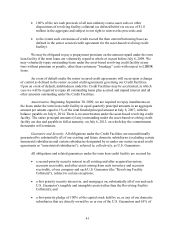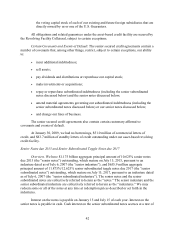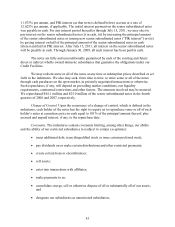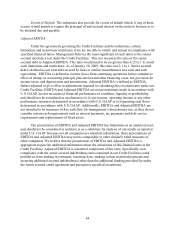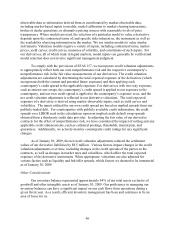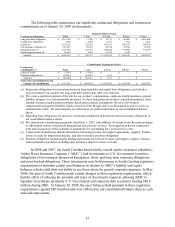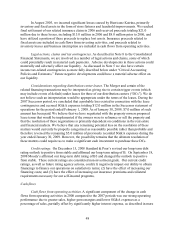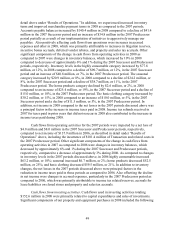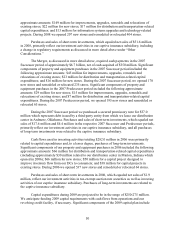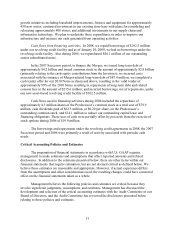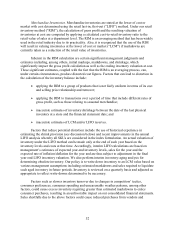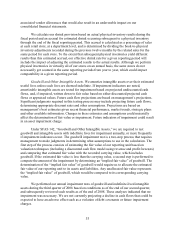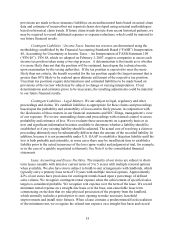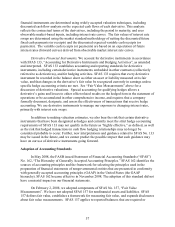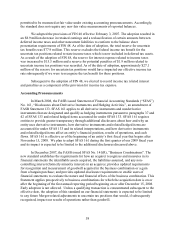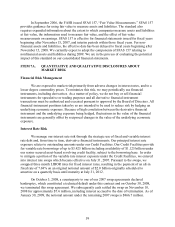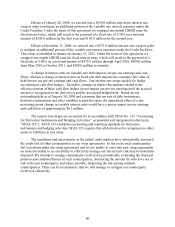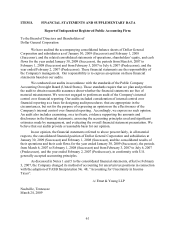Dollar General 2008 Annual Report Download - page 53
Download and view the complete annual report
Please find page 53 of the 2008 Dollar General annual report below. You can navigate through the pages in the report by either clicking on the pages listed below, or by using the keyword search tool below to find specific information within the annual report.51
growth initiatives including leasehold improvements, fixtures and equipment for approximately
450 new stores; continued investment in our existing store base with plans for remodeling and
relocating approximately 400 stores; and additional investments in our supply chain and
information technology. We plan to undertake these expenditures in order to improve our
infrastructure and increase our cash generated from operating activities.
Cash flows from financing activities. In 2008, we repaid borrowings of $102.5 million
under our revolving credit facility and as of January 30, 2009, we had no borrowings under the
revolving credit facility. Also during 2008, we repurchased $44.1 million of our outstanding
senior subordinated notes.
In the 2007 Successor period, to finance the Merger, we issued long-term debt of
approximately $4.2 billion and issued common stock in the amount of approximately $2.8 billion
(primarily relating to the cash equity contributions from the Investors); we incurred costs
associated with the issuance of Merger-related long-term debt of $87.4 million; we completed a
cash tender offer for our 2010 Notes as discussed above, resulting in the valid tender of
approximately 99% of the 2010 Notes resulting in repayments of long-term debt and related
consent fees in the amount of $215.6 million; and incurred borrowings, net of repayments, under
our new asset-based revolving credit facility of $102.5 million.
Cash flows used in financing activities during 2006 included the repurchase of
approximately 4.5 million shares of the Predecessor’ s common stock at a total cost of $79.9
million, cash dividends paid of $62.5 million, or $0.20 per share, on the Predecessor’ s
outstanding common stock, and $14.1 million to reduce our outstanding capital lease and
financing obligations. These uses of cash were partially offset by proceeds from the exercise of
stock options during 2006 of $19.9 million.
The borrowings and repayments under the revolving credit agreements in 2008, the 2007
Successor period and 2006 were primarily a result of activity associated with periodic cash
needs.
Critical Accounting Policies and Estimates
The preparation of financial statements in accordance with U.S. GAAP requires
management to make estimates and assumptions that affect reported amounts and related
disclosures. In addition to the estimates presented below, there are other items within our
financial statements that require estimation, but are not deemed critical as defined below. We
believe these estimates are reasonable and appropriate. However, if actual experience differs
from the assumptions and other considerations used, the resulting changes could have a material
effect on the financial statements taken as a whole.
Management believes the following policies and estimates are critical because they
involve significant judgments, assumptions, and estimates. Management has discussed the
development and selection of the critical accounting estimates with the Audit Committee of our
Board of Directors, and the Audit Committee has reviewed the disclosures presented below
relating to those policies and estimates.


